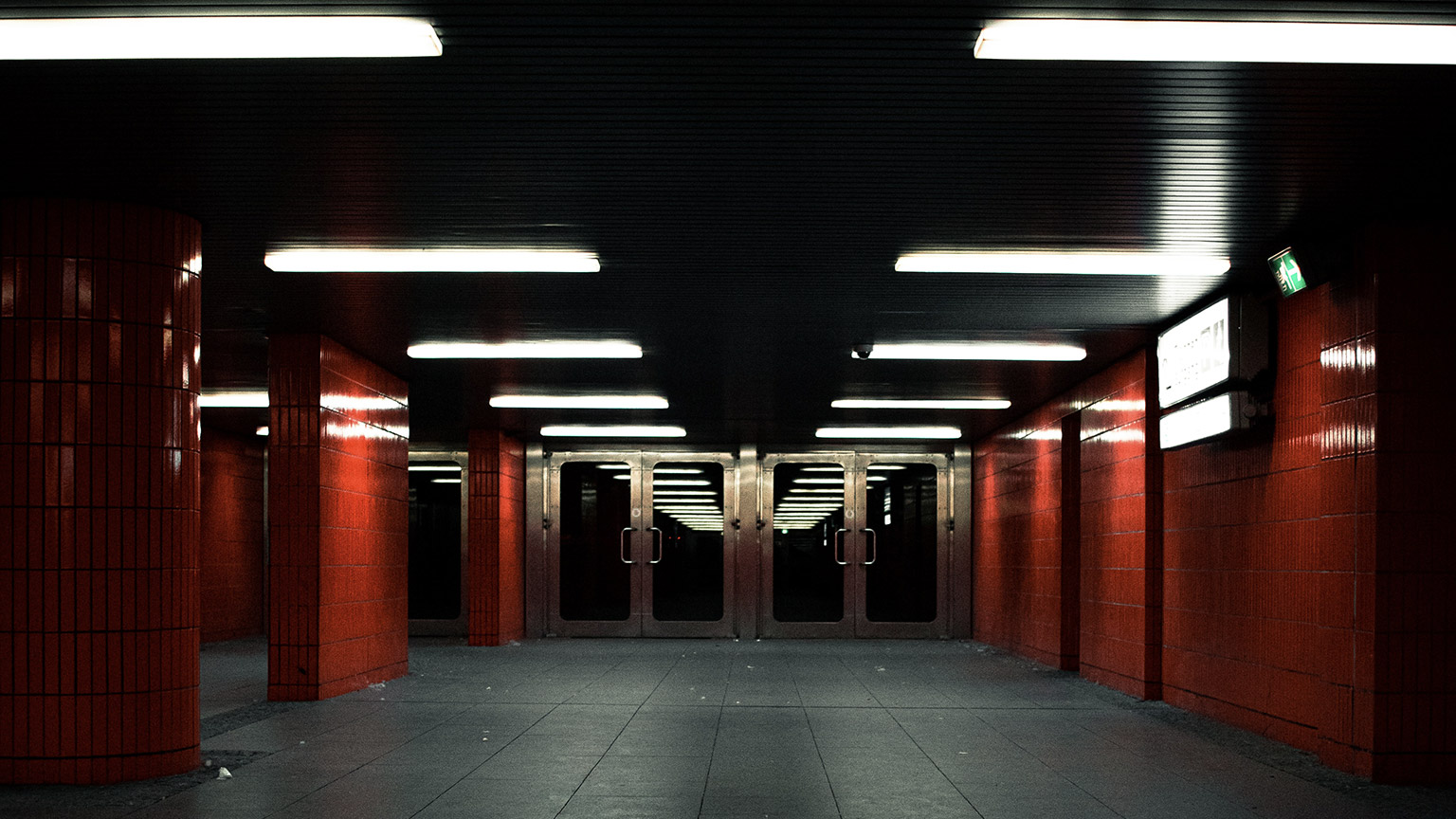| Day One | Day Two | Day Three | |
|---|---|---|---|
| Course Content | Lighting systems - incandescent, fluorescent, LED, and halogen. | Luminaire installations. AS/NZS3000 lighting requirements. | Planning a simple lighting layout. Assessment completion, tutor self-check quiz. |
| Self-directed Learning | Comparing light sources activity. | Completing course exercises, SDL and assessments. | Completing course exercises, SDL and assessments. |
In order for you to gain the most value from your qualification and to prepare you for your assessment and the industry, make sure you complete all of the online and SDL tasks.
What we're covering:
- luminaires
- lighting systems
Basic lighting systems consist of a light source, a control device, and a power source. The light source can be incandescent, fluorescent, LED, or halogen, depending on the application and the desired lighting effect. The control device can be a switch, a dimmer, a timer, or a sensor, depending on the level of control and automation required. The power source can be mains power or a battery, depending on the location and the backup requirement.
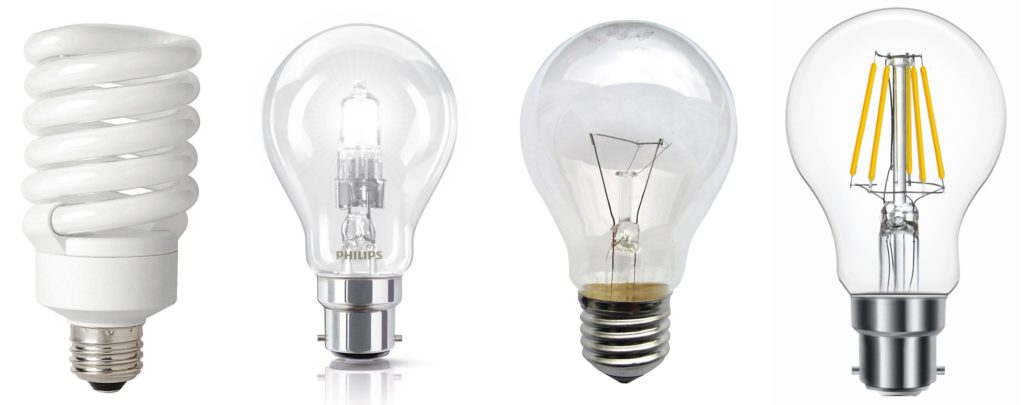
Luminaires
A luminaire is a complete lighting unit that includes the light source(s) as well as the housing, mounting, and wiring necessary to install and operate the light source(s) safely and effectively. The term "luminaire" is often used interchangeably with "light fixture."
The Wiring Rules, define a luminaire as:
"an electrical device which is intended to distribute, filter, or transform the light emitted from one or more lamps and which includes all components necessary for fixing and protecting the lamps, as well as any means of connection to the electrical supply."
Lighting system
There are several lighting systems used for various applications in residential and commercial settings, including incandescent, fluorescent, LED, and halogen lighting. Each type has its own unique properties and applications, so it's important to understand the differences between them.
Incandescent Lighting
This type of lighting system has been widely used for many years however it is becoming less common due to advances in technology. It is often used in residential settings, such as living rooms and bedrooms, and can be used as accent lighting in retail settings.
Incandescent lighting works by passing an electric current through a wire filament, which heats up and produces light. The filament is typically made of tungsten, a metal that has a high melting point and can withstand the high temperatures required for incandescent lighting. As the filament heats up, it emits light in all directions, creating a warm and glowing effect.
Incandescent luminaires are available in various shapes and sizes, including bulbs, candles, and reflectors.
- Glass bulb
- Low pressure inert gas (argon, neon, nitrate)
- Tungsten filament
- Support wires
- Contact wire (goes out of stem)
- Contact wire (goes into stem)
- Stem (glass mount)
- Cap (sleeve)
- Insulation (vitrite)
- Electrical contact
Features of incandescent lighting include:
- Warm yellowish colour temperature of around 2700K, creating a cozy and inviting atmosphere in residential settings.
- High colour rendering index (CRI): The CRI measures the ability of a light source to accurately show the true colours of objects. Incandescent lighting has a high CRI, meaning that it provides excellent colour accuracy and makes colours appear more vibrant and natural.
- Dimmable which allows for flexible control of lighting levels and can help to create a more comfortable and relaxed environment.
- Short lifespan typically last around 1,000 hours, which is significantly shorter than many other types of lighting.
- Low energy efficiency converting about 5% of the energy it uses into light. Rest is lost as heat, leading to increased cooling costs in warmer climates.
- Environmental concerns as it contains small amounts of toxic materials such as lead and mercury. Its low energy efficiency makes it a less environmentally friendly option compared to other lighting technologies.
Incandescent lighting is being phased out in many countries in favour of more energy-efficient lighting technologies such as LED. They are mostly used for decorative and accent lighting in residential settings and specialty lighting applications such as theatre and stage lighting.
LED Lighting
LED luminaires are increasingly popular in NZ due to their energy efficiency and longevity. They are suitable for a wide range of applications, including indoor and outdoor lighting, accent lighting, task lighting, and general lighting in residential and commercial settings. They are also used in automotive lighting, aviation lighting, and street lighting. LED bulbs can be installed in recessed or surface-mounted fixtures and are commonly used for retrofitting existing lighting systems to improve energy efficiency. LED luminaires can come in various shapes and sizes, including bulbs, tubes, panels, and strips.
LED luminaires work by converting electrical energy into light through the use of light-emitting diodes (LEDs). LED luminaires require a driver to regulate the electrical current and voltage to the LEDs. An LED luminaire works by using an LED (Light Emitting Diode) as the light source. The LED is a semiconductor device that receives regulated DC power and emits light through a process called electro-luminescence. The luminaire may also include additional components to improve efficiency, performance, and appearance.
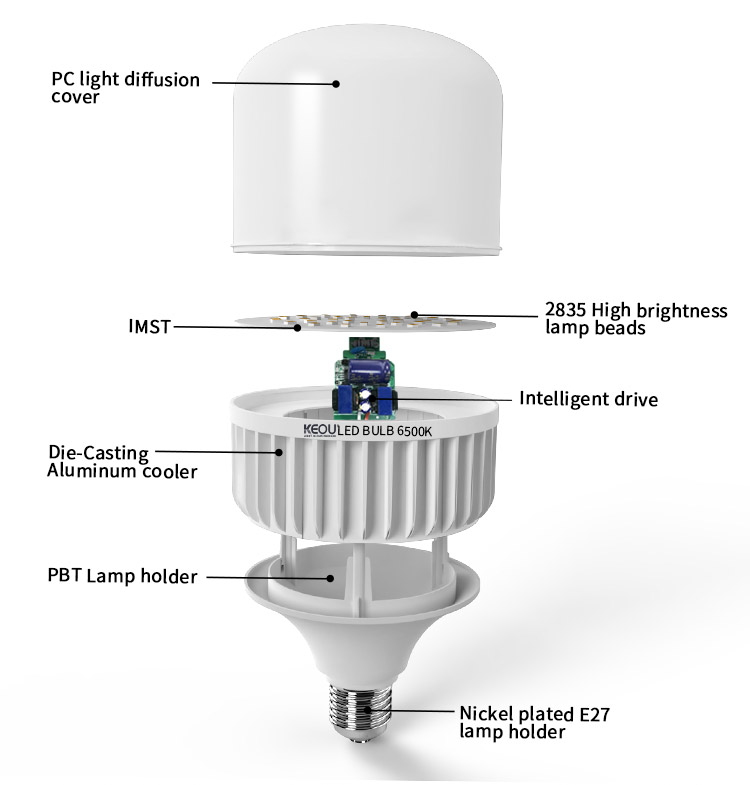
Features of LED lighting include:
- Energy efficient using much less energy than traditional incandescent lighting. Up to 90% of energy is converted into light, which can help to reduce energy costs and greenhouse gas emissions.
- Long lifespan lasting up to 50,000 hours or more, which is significantly longer than incandescent or fluorescent bulbs and reduces the frequency of replacements and maintenance costs.
- Versatile: LEDs come in a wide range of colours, sizes, and shapes and can be used for a variety of applications, from decorative lighting to task lighting and outdoor lighting.
- Durable and able to withstand shocks, vibrations, and extreme temperatures without breaking or burning out, making them suitable for outdoor and industrial lighting applications.
- Instantly on/off and do not require warm-up time.
- High initial cost although the long-term energy savings can offset this cost.
- Limited dimming as some LED bulbs are not compatible with dimmer switches. This is changing with the development of new technology.
- Blue light emitted by LED lighting may result in potential health effects, although this can be addressed with the use of warm white LED bulbs.
Exercise 34
Fluorescent Lighting
Fluorescent luminaires are commonly used in commercial and industrial settings due to their high efficiency and long life. They are used for general lighting, task lighting, and accent lighting in offices, schools, hospitals, and warehouses. Fluorescent luminaires are also used for plant growth and aquarium lighting. They come in various sizes and shapes, including tubes, compact bulbs, and high-intensity discharge (HID) lamps. Fluorescent lighting fixtures can be recessed or surface-mounted.
A fluorescent luminaire works when an electrical current is passed through the electrodes at either end of a gas-filled glass tube. This current excites the gas, causing it to emit ultraviolet (UV) light. The UV light interacts with a phosphor coating on the inside of the glass tube, causing it to emit visible light. The phosphor coating determines the colour temperature of the light. The visible light is emitted evenly across the surface of the glass tube, creating a uniform light output. The luminaire may also include a reflector to improve light distribution and efficiency. The electrical current is regulated by a ballast, which helps to maintain a stable current and prevent flickering. The ballast may be either an electronic or magnetic type, depending on the design of the luminaire.
Features of fluorescent lighting include:
- Energy efficient, converting up to 75% of energy into light thus reducing energy costs and greenhouse gas emissions.
- Long lifespan lasting up to 10,000 hours or more, reducing the frequency of replacements and maintenance costs.
- Versatile - the variety of shapes and sizes makes them suitable for a wide range of applications.
- Dimmable: Some fluorescent bulbs are compatible with dimmer switches, allowing for customisable lighting levels.
- Large area coverage - the broad, even light emitted is well-suited to large areas, such as office spaces and warehouses.
- Harsh or unnatural-looking lighting.
- Mercury content which can be harmful to the environment if not disposed of properly.
- Flickering and humming noise can be distracting or irritating.
Halogen Lighting
Halogen lighting is often used for outdoor lighting, as well as in retail and commercial settings. It can also be used for accent lighting such as in track lighting or spotlights; task lighting applications, such as in desk lamps or under-cabinet lighting; display lighting especially where high colour rendering and dimming capability are required; and automotive lighting. Halogen bulbs can be installed in recessed or surface-mounted fixtures. Halogen luminaires come in various shapes and sizes, including bulbs, capsules, and spotlights.
Halogen luminaires are similar to incandescent luminaires but use halogen gas to improve their energy efficiency and lifespan. They work by passing an electric current through a tungsten filament, which is housed in a small quartz capsule filled with halogen gas. The heat from the filament causes the halogen gas to react with the tungsten atoms, creating a tungsten-halogen cycle that regenerates the filament and increases its lifespan. The halogen gas also helps to keep the quartz capsule clear of tungsten deposits, ensuring a consistent and bright light output. The visible light emitted by the halogen bulb is bright and clear, with a high colour rendering index (CRI).
- Bulb
- Halogen filled capsule
- Tungsten filament
- Capsule support
- Base
- Contact
Features of halogen lighting include:
- High-quality, bright, clear light with a high CRI, which means that colours are rendered accurately and vividly.
- Dimmable - compatible with dimmer switches, allowing for customisable lighting levels.
- Compact size that can fit into a variety of fixtures and applications.
- Instant on, immediately reaching full brightness.
- Energy inefficient.
- Short lifespan than other types of lighting, typically lasting around 2,000 hours.
- High heat generation which can make them unsuitable for certain applications.
- Fragile and easily broken.
High-Intensity Discharge (HID) Lighting
HID luminaires are commonly used in outdoor and industrial settings that require high-intensity lighting, including streetlights, automotive headlamps, horticulture and aquarium lighting, and security lighting. They can also be used for commercial and industrial lighting applications, such as in warehouses and factories.
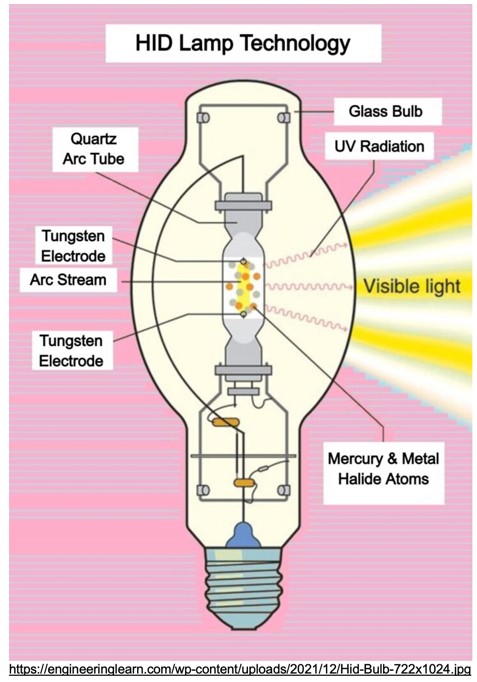
HID or High-Intensity Discharge lighting operates by creating an electrical arc between two electrodes in a gas-filled bulb, which generates intense light.
HID luminaires require a ballast to regulate the electrical current and voltage to the lamp. They come in various types, including high-pressure sodium (HPS), metal halide (MH), and mercury vapour lamps.
Features of HID lighting include:
- High-intensity, bright light that can illuminate large areas effectively.
- Energy efficient, using less power to produce the same amount of light, as other bulbs.
- Long lifespan requiring less frequent replacement and reducing maintenance costs.
- Range of colour temperatures from warm white to cool white, making them suitable for different applications.
- High cost of installation and maintenance due to the ballast required for operation.
- Warm-up time before reaching full brightness.
- Environmental concerns as they contain toxic materials, such as mercury, which can be harmful if not disposed of properly.
- High cost.
Exercise 35
- Summarise this information about types of lighting in the table in this worksheet.
- Another recent lighting technology is Induction Lighting. Find out how this lighting operates and its applications.
Self-directed Learning
Comparing light sources
In this activity you may wish to work with a partner. You will need three different types of light bulbs - incandescent, fluorescent, and LED, all the same wattage or brightness level.
- Turn off all other light sources in the room to create a controlled environment for the comparison.
- Turn on each light bulb one at a time and observe the quality of light produced by each bulb.
- Note the following characteristics:
- Brightness: how bright is the light produced by each bulb.
- Colour temperature: is the light warm or cool? Does it have a yellowish or bluish hue?
- Colour rendering: how well does the light reveal the true colours of objects?
- Flicker: does the light appear steady or does it flicker
- Glare: is the light too bright or too harsh to look at directly
- Record your observations.
- Compare your observations for each light source and note any similarities or differences. For example, you may note that the LED light produces a brighter and cooler light than the incandescent bulb, which has a warmer colour temperature.
- Draw conclusions about which light source you think is the most effective and why, based on your observations. Consider factors such as energy efficiency, colour rendering, and cost.
- Share your observations and conclusions on the class forum and discuss any differences in opinions or observations.
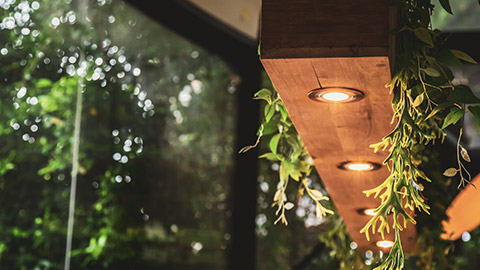
What we're covering:
- recessed luminaires
- surface mounted luminaires
- pendants
- tracks
- outdoors
Recessed luminaires
Recessed luminaires, also known as downlights, are light fixtures that are installed flush with the ceiling or wall, creating a streamlined and minimalist look. They are a popular choice for both residential and commercial applications due to their ability to provide a uniform and unobtrusive lighting solution.
Design and Construction
Recessed luminaires are constructed with a housing, a trim, and a light source. The housing is the body of the fixture and is installed into the ceiling or wall. The trim is the visible part of the fixture that covers the opening in the ceiling or wall and can come in a variety of styles and finishes to match the decor of the space. The light source is the bulb or LED module that provides the illumination.
Types of Recessed Luminaires
Fixed downlights are the most common type of recessed luminaires and are designed to provide a fixed beam of light in a specific direction.
Adjustable downlights are designed to direct the light in different directions.
Wall washers provide a wide beam of light that illuminates the entire wall, creating a soft and even illumination.
Pinhole downlights provide a small, focused beam of light that is ideal for highlighting artwork or other decorative features.
Applications
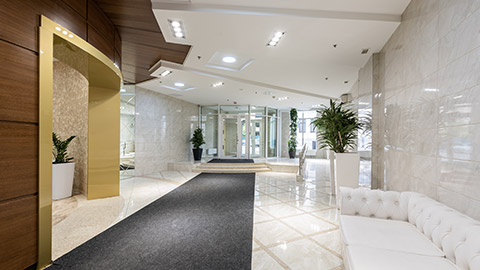
Residential lighting for general lighting, accent lighting, and task lighting e.g., providing general illumination in a living room, highlighting a piece of artwork in a hallway, or providing task lighting in a kitchen.
Commercial lighting spaces, such as offices, retail stores, and restaurants, to provide general lighting and accent lighting. They can also be used in outdoor applications, such as for lighting pathways or parking lots.
Hospitality lighting to provide a uniform and unobtrusive lighting solution that creates a relaxing and inviting atmosphere in hotels and resorts.
Healthcare lighting to provide a sterile and well-lit environment for medical procedures.
Surface-mounted luminaires
Surface-mounted luminaires are installed directly onto a surface, such as a ceiling or wall, rather than being recessed into it. They are popular in both residential and commercial applications due to their versatility, ease of installation, and ability to provide a wide range of lighting effects.
Design and Construction
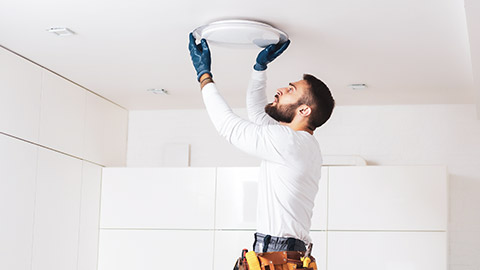
Surface-mounted luminaires are constructed with a housing, a light source, and a mounting bracket. The housing is the body of the fixture and can come in a variety of shapes, sizes, and materials to match the decor of the space. The light source is the bulb or LED module that provides the illumination, and the mounting bracket is the mechanism that attaches the fixture to the surface.
Types of Surface-Mounted Luminaires
Ceiling-mounted luminaires are the most common type of surface-mounted luminaires and are installed directly onto a ceiling. They come in a variety of shapes and sizes, including round, square, and rectangular, providing a range of lighting effects, such as diffused, direct, or indirect lighting.
Wall-mounted luminaires are installed directly onto a wall and can provide a range of lighting effects, including up-lighting, downlighting, and wall washing. They are commonly used in corridors, stairwells, and other areas where indirect lighting is desired.
Pendant luminaires are suspended from the ceiling and can provide a range of lighting effects, including diffused, direct, and indirect lighting. They are commonly used in dining areas, entryways, and other areas where a decorative lighting fixture is desired.
Applications
Applications are similar to recessed luminaires - residential lighting for general lighting, accent lighting, and task lighting; commercial lighting spaces; hospitality lighting; and healthcare lighting.
Pendant luminaires
Pendant luminaires, also known as hanging or suspension luminaires, are lighting fixtures that are suspended from the ceiling using a rod, chain, or cord. They are popular in both residential and commercial applications due to their versatility, aesthetic appeal, and ability to provide a range of lighting effects.
Design and Construction
Pendant luminaires consist of a light source, a shade or diffuser, a suspension system, and a canopy. The light source can be an incandescent, fluorescent, or LED bulb or module and is usually located inside the shade or diffuser. The shade or diffuser is the decorative or functional component of the luminaire that helps to control the direction and intensity of the light. The suspension system consists of a rod, chain, or cord that attaches the luminaire to the ceiling, and the canopy is the decorative or functional component that covers the electrical box in the ceiling.
Types of Pendant Luminaires
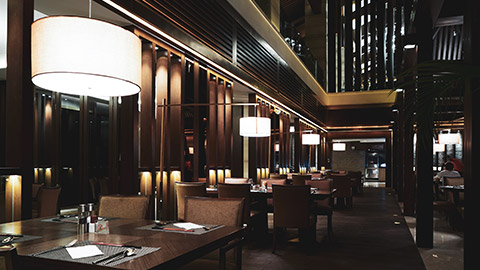
Drum pendant luminaires are the most common type of pendant luminaires and feature a cylindrical or drum-shaped shade or diffuser. They come in a variety of materials, including fabric, glass, and metal, and can provide a range of lighting effects, from diffused to direct lighting.
Bowl pendant luminaires feature a bowl-shaped shade or diffuser and are commonly used in areas where direct lighting is required, such as over dining tables or kitchen islands.
Linear pendant luminaires feature a long, narrow shape and are commonly used in commercial applications, such as offices and retail stores, to provide direct lighting over workspaces or displays.
Applications
Applications are similar to recessed luminaires - residential lighting for general lighting, accent lighting, and task lighting; commercial lighting spaces; hospitality lighting; and healthcare lighting.
Track luminaires
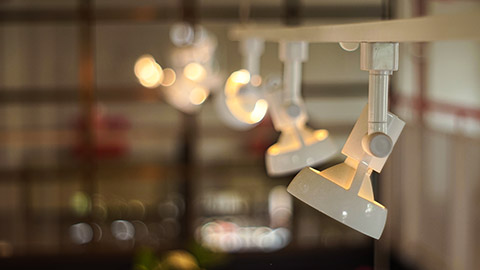
Design and Construction
Track luminaires, also known as track lighting or rail lighting, are lighting fixtures that are mounted on a track system. The track system consists of a long, straight bar or rail, typically made of metal, that is mounted to a ceiling or wall. The track features slots or grooves that allow the luminaires to be positioned along it and adjusted as needed.
They can contain one or multiple light sources, and can be adjusted to aim light where it is needed.
Track luminaires offer several advantages over traditional lighting systems. They are highly versatile and can be used to create a wide range of lighting effects, from task lighting in retail and hospitality spaces, to accent lighting, to general room lighting. They can also be easily adjusted or repositioned, making them ideal for retail displays, art galleries, and spaces where lighting needs may change frequently.
Types of Track Luminaires
Spotlights are the most basic type of track luminaire, consisting of a single adjustable light source that can be directed to highlight specific areas or objects.
Floodlights feature a wider beam angle and are designed to provide general room lighting or to wash walls or artwork with light.
Pendant luminaires are suspended from the track system and are ideal for providing focused task lighting over a workspace.
Linear luminaires consist of a long, narrow light source that is ideal for creating a continuous strip of light along a wall or ceiling.
Applications
Track luminaires are used in a variety of settings, including homes, offices, retail stores, art galleries, museums, and restaurants. In homes, they are often used to highlight artwork, architectural features, or decorative accents. In offices, they can be used to provide task lighting for individual workstations or to highlight specific areas of a conference room or lobby. In retail stores, they are often used to highlight merchandise displays or to create a certain ambiance within the store.
Outdoor luminaires
Outdoor luminaires are lighting fixtures specifically designed for use in outdoor environments, such as parks, streets, parking lots, and buildings' exteriors. They are weather-resistant and typically installed on poles or mounted on buildings to provide sufficient illumination to outdoor spaces, enhance the aesthetics of outdoor areas, and improve safety and security. They can contain one or multiple light sources, and are often used for security lighting, pathway lighting, and accent lighting in residential, commercial, and hospitality settings.
Types of Outdoor Luminaires
Area Lighting luminaires provide general illumination to large outdoor spaces, such as parking lots, parks, and outdoor events. They are typically mounted on poles and use high-intensity discharge lamps, such as metal halide or high-pressure sodium, to provide bright and uniform illumination over a large area.
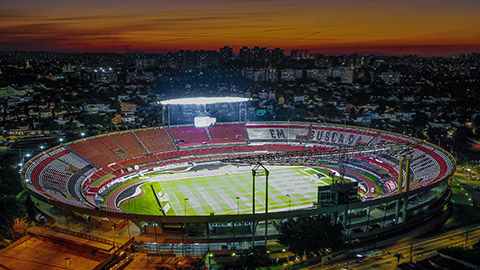
Floodlights are high-intensity luminaires that illuminate a large area with a wide and bright beam of light. They are often used for security and safety purposes, such as illuminating large building exteriors, stadiums, and outdoor events.
Street lighting luminaires provide illumination to public roads and streets. These luminaires use LED, high-pressure sodium, or metal halide lamps, and are often mounted on poles along the roadside to provide sufficient illumination and safety to motorists and pedestrians.
Bollard lighting luminaires are low-level luminaires designed to illuminate pathways, walkways, and landscapes. These luminaires are typically installed at ground level and use LED lamps to provide soft and diffused lighting to enhance the beauty of the surrounding environment.
Wall pack luminaires are mounted on building walls and designed to illuminate the surrounding area with a broad, diffuse light. They are often used to light building exteriors, entrances, and exits.
Landscape lighting luminaires highlight and enhance outdoor spaces such as gardens, walkways, and water features. They use LED lamps and are often low-level fixtures designed to illuminate specific areas while providing subtle and soft lighting.
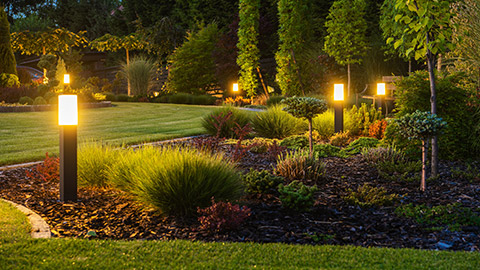
Exercise 36
Answer the questions about lighting installations on this worksheet. Email it to your tutor when you are done.
AS/NZS 3000:2018 - LIGHTING SYSTEM REQUIREMENTS
AS/NZS 3000:2018 Electrical Installations (the Wiring Rules) outlines the requirements for the installation of electrical wiring and equipment in buildings, including lighting systems. As with any electrical installation carried out in New Zealand you must adhere to AS/NZS 3000:2018:
- Section 2 - General Requirements: This section outlines the general requirements for electrical installations, including the installation of luminaires, and provides guidance on their selection, placement and fixing.
- Section 3 - Selection and Erection of Equipment: This section covers the selection and erection of electrical equipment, including luminaires, and provides guidance on their suitability for the intended application.
- Section 4 - Protection for Safety: This section includes requirements for the protection of electrical installations against hazards, such as fire and electric shock, and includes guidance on the installation of luminaires in hazardous locations.
- Section 5 - Selection of Cables and Conductors: This section provides guidance on the selection of cables and conductors for electrical installations, including those used for lighting.
- Section 6 - Earthing and Bonding: This section covers the requirements for earthing and bonding of electrical installations, including lighting installations, to ensure electrical safety.
- Section 7 - Special Installations or Locations: This section provides guidance on the requirements for electrical installations in special locations, such as swimming pools, hazardous areas, and outdoor installations, including the installation of luminaires and lighting requirements.
- Section 8 - Energy Efficiency: This section provides guidance on the selection of energy-efficient luminaires and lighting systems, including the installation of LED lighting and lighting controls, to reduce energy consumption and operating costs.
You should also refer to AS/NZS 3000 for information about:
- Minimum lighting levels required for different areas of a building, such as workspaces, public areas, and outdoor spaces. Guidance on lighting colour and uniformity is also provided. (See Section 2.4.4.4 and 2.4.4.5.)
- Luminaire installation requirements, including clearance distances from combustible materials, minimum mounting heights, and suitable fixing methods.
- Emergency lighting systems requirements, including the types of luminaires that should be used and their placement.
- Testing and maintenance of lighting installations to ensure they remain safe and efficient. This includes regular cleaning, lamp replacement, and testing of emergency lighting systems.
- Wiring systems for lighting installations to ensure they are suitable for the location and conditions of the installation and installed in accordance with the manufacturer's instructions.
- Wiring methods for lighting installations according to the location and conditions of the installation.
- Switching and control mechanisms appropriate to the situation and position, including switches, dimmers, and timers.
- Environmental factors that affect lighting installations, such as temperature, humidity, and corrosive substances.
- Documentation and certification upon completion of the installation of lighting systems.
It is important to note that these are just some of the key requirements outlined in AS/NZS 3000, and that the standard should be consulted for full details on the requirements for the installation of lighting systems in New Zealand.
Self-directed Learning
Finish your assessments for this module.
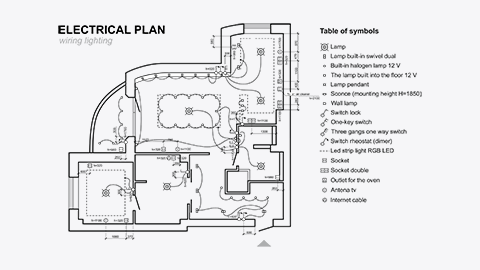
What we're covering:
- space, area and appliances
- practice for designing a lighting layout
Designing a lighting layout requires careful consideration of the space, the intended use of the area, and the available electrical resources. Planning a simple lighting layout involves the following steps:
- Determine the room or space to be lit: The size, shape, and function of the room will dictate the number and placement of lights required. (The surface area is the area of the floor or work surface that requires lighting and can be found by measuring the length and width of the space and multiplying them together.)
- Identify the purpose of the space: Based on the type of space, (office, warehouse, retail store, or outdoor area) and the intended use of the space. Different tasks require different lighting levels e.g., a warehouse may require lower lighting levels for general navigation, but higher levels for detailed inspection of products.
- Calculate the required lighting level: Based on the specific needs of the space or from the NZ Standard for Interior Lighting (NZS 6703:1984) or the Illuminating Engineering Society (IES) Lighting Handbook. A summary is shown here.
| Type of Space | Recommended Lighting Level (lux) |
|---|---|
| Office | 300-500 |
| Conference room | 300-500 |
| Classroom | 300-500 |
| Library | 300-500 |
| Retail store | 1000-1500 |
| Supermarket | 1500-2000 |
| Warehouse | 150-300 |
| Factory/manufacturing | 150-300 |
| Gymnasium | 200-500 |
| Hospital | 300-500 |
| Restaurant | 50-1000 |
| Kitchen | 300-500 |
| Bathroom | 100-300 |
| Corridor | 50-150 |
| Stairway | 100-150 |
A useful formula to calculate the required lighting level is:
- Choose the appropriate type of light fixture: Based on the intended use of the space and the aesthetics of the room. Light fixtures should be evenly spaced and positioned to provide uniform lighting throughout the space.
- Determine the number of light fixtures required: Depending on the size of the space and the desired lighting level. As a general rule, one light fixture per 10 square meters of space is a good starting point. Fixtures should be evenly spaced to avoid uneven lighting.
- Determine the height of the light fixtures: Depending on the type of fixture chosen and the ceiling height. In general, light fixtures should be placed at a height that provides even illumination of the space.
- Choose the appropriate light bulbs: Based on the type of light fixture and the desired colour temperature. Warm white (2700-3000K) is suitable for living spaces, while cool white (4000-5000K) is suitable for workspaces.
- Plan the electrical layout: Depending on the number and type of light fixtures chosen. Plan the electrical layout to ensure that the wiring and circuit breakers can handle the load.
- Ensure compliance with NZ electrical regulations: Including the Wiring Rules and the Electricity Safety Regulations. Lighting fixtures and bulbs should be energy-efficient and long-lasting to minimise energy consumption and maintenance costs.
- Install the light fixtures: According to the electrical layout plan. Test the lighting to ensure that it meets the required lighting level and aesthetics.
Example 1
Planning a lighting layout for a small living room in a typical New Zealand home.
- Determine the room or space to be lit: The room is a small living room with a floor area of 3.5m x 4m.
- Identify the purpose of the space: The living room is primarily used for relaxing and entertaining guests, so the lighting needs to create a warm and inviting atmosphere.
- Calculate the required lighting level: Based on the intended use of the space, we want to achieve a lighting level of 200 lux. Rearranging the formula:
Required light output = required illuminance x surface area
= 200 x 14
2800 lm
- Choose the appropriate type of light fixture: For this living room, we'll use a combination of recessed downlights and a pendant light. The recessed downlights will provide ambient lighting, while the pendant light will serve as a focal point and provide a warm and inviting glow.
- Determine the number of light fixtures required: We'll install six recessed downlights and one pendant light. The six downlights will be evenly spaced in two rows of three, with each row centred on the long walls of the room. The pendant light will be centred over the seating area.
- Determine the height of the light fixtures: The recessed downlights will be installed in the ceiling at a height of 2.4m, while the pendant light will be installed at a height of 1.8m above the floor.
- Choose the appropriate light bulbs: For the recessed downlights, we'll use 9W LED bulbs with a warm white colour temperature of 2700K. For the pendant light, we'll use a 40W incandescent bulb with a warm white colour temperature of 2700K.
- Plan the electrical layout: The six downlights will be wired in two circuits of three, each on a 10A breaker. The pendant light will be wired on a separate 10A breaker.
- Ensure compliance with NZ electrical regulations: The wiring and electrical layout will be designed and installed in compliance with the Wiring Rules and the Electricity Safety Regulations.
- Install the light fixtures: The recessed downlights will be installed in the ceiling using cut outs that are 90mm in diameter. The pendant light will be installed in the centre of the room using a ceiling rose. All light fixtures will be wired and connected to the appropriate circuit breakers.
Example 2
Lighting Plan for an Office Space
- Determine the space to be lit: The space to be lit is a small office with a floor area of 4m x 4m.
- Identify the purpose of the space: The office space is primarily used for work, so the lighting needs to be bright enough to allow for reading, writing and computer work.
- Calculate the required lighting level: Based on the intended use of the space, we want to achieve a lighting level of 500 lux. Using the formula:
We can calculate the required light output as:
Required light output = Required illuminance x surface area
= 500 x 16
= 8000 lumens
- Choose the appropriate type of light fixture: For this office space, we'll use a combination of recessed downlights and desk lamps. The recessed downlights will provide ambient lighting, while the desk lamps will provide task lighting.
- Determine the number of light fixtures required: We'll install six recessed downlights and two desk lamps. The six downlights will be evenly spaced in two rows of three, with each row centred on the long walls of the room. The desk lamps will be placed on the desk at the appropriate position.
- Determine the height of the light fixtures: The recessed downlights will be installed in the ceiling at a height of 2.4m, while the desk lamps will be placed on the desk at a height of approximately 40cm above the work surface.
- Choose the appropriate light bulbs: For the recessed downlights, we'll use 12W LED bulbs with a cool white colour temperature of 4000K. For the desk lamps, we'll use 9W LED bulbs with a cool white colour temperature of 4000K.
- Plan the electrical layout: The six downlights will be wired in two circuits of three, each on a 10A breaker. The two desk lamps will be plugged into power sockets and will have their own on/off switch.
- Ensure compliance with NZ electrical regulations: The wiring and electrical layout will be designed and installed in compliance with the Wiring Rules and the Electricity Safety Regulations.
- Install the light fixtures: The recessed downlights will be installed in the ceiling using cut-outs that are 90mm in diameter. The desk lamps will be placed on the desk and plugged into power sockets. All light fixtures will be wired and connected to the appropriate circuit breakers.
Self-directed Learning
Complete your assessments.
You are now ready to move onto Module 5! Keep up the good work!
Glossary
This is a list of words taken from this resource. To help improve your understanding, research their meanings or find the definitions in the workbook. There is space to write the definitions. You could also look up how to say the word – most online dictionaries will demonstrate this.
Reference List
- All Electrical. (2022). How To Strip Electrical Wire (Complete Guide). [Video] YouTube. https://youtu.be/d6QMkfs7Pn0
- Frank, R., & Morton, C. (2005). Comparative Corrosion and Current Burst Testing of Copper and Aluminium Electrical Power Connectors. Industry Applications Conference, 2005. https://www.copper.org/applications/electrical/building/pdf/A6108.pdf
- Friedman, D. (n.d.) Galvanic Scale & Galvanic Corrosion.
- https://inspectapedia.com/BestPractices/Galvanic_Scale_Corrosion.php
- Havire, M. (2019). Factors that influence cable selection. Sparks Electrical News.
- https://www.crown.co.za/latest-news/sparks-electrical-news-latest-news/9546-factors-that-influence-cable-protection
- Learn Electronics. (2021). VOLTAGE DROP FORMULA Which formula to use and how to do the calculations correctly. https://youtu.be/ej3-6wcHfkE
- Mark’s Reviews and Tutorials. (2019). How to check an appliance lead. Test power lead are the wires broken? Use a multimeter cord cable. [Video] YouTube. https://youtu.be/lbPuT-WxDJ8
- Mitchell, R. (2020). How to Gauge Wire. https://www.wikihow.com/Gauge-Wire
- Silver Cymbal. (2018). How To Strip Electrical Wire like a Pro 6 ways. [Video] YouTube. https://youtu.be/d8O57J1d2o4
- Sparkydave. (2017). How to Strip Electrical Cable In New Zealand. [Video] YouTube.
- https://youtu.be/zrj6hsQpl14
- The Ultimate Recycler. (2021). Basic tips on how to fit & wire an Australian electrical plug DIY extension cord repair/modification. [Video] YouTube. https://youtu.be/LcPntXH5u4c
- Test and Tag Training. (2016). How to Test & Tag Extension Leads. https://youtu.be/L2YwEtZtrMg
- Veerendra. (2020). What is the definition of resistance in physics? A+Topper.
- https://www.aplustopper.com/resistance-of-conductor/
